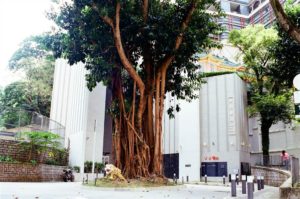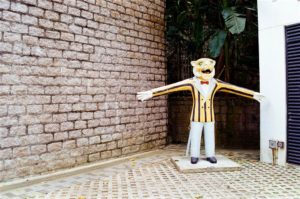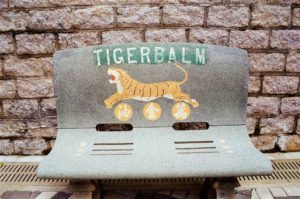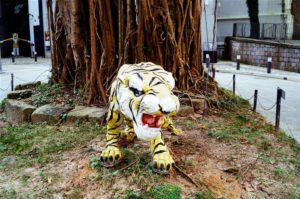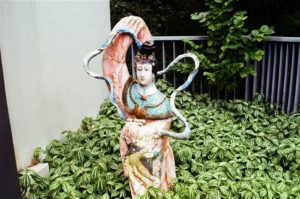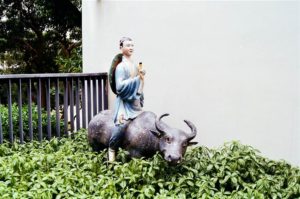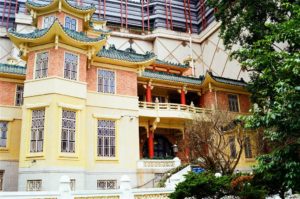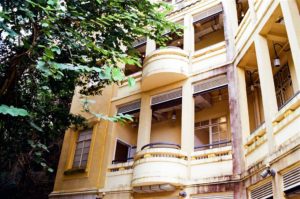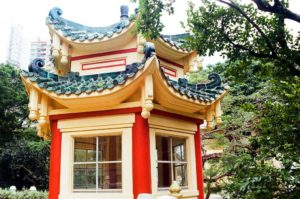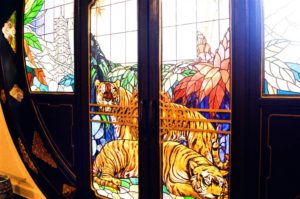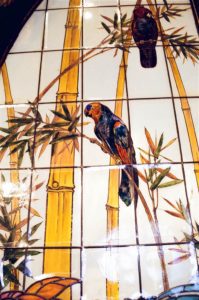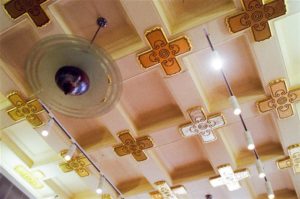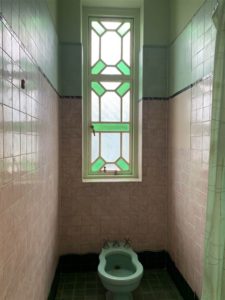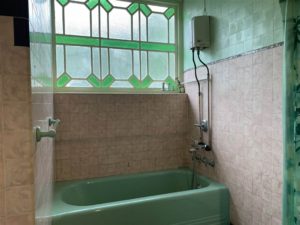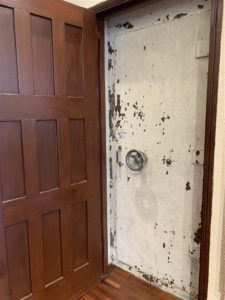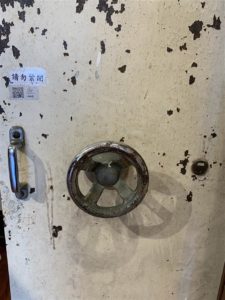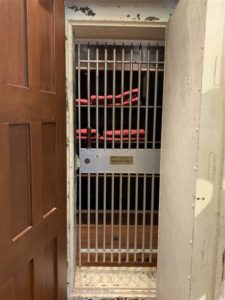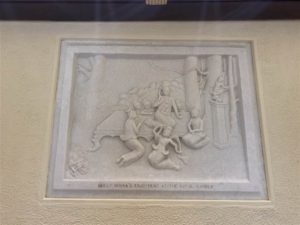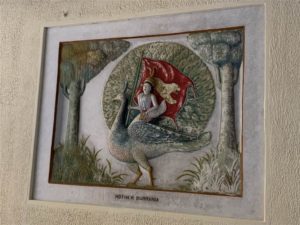The Haw Par Mansion (Now Haw Par Music)
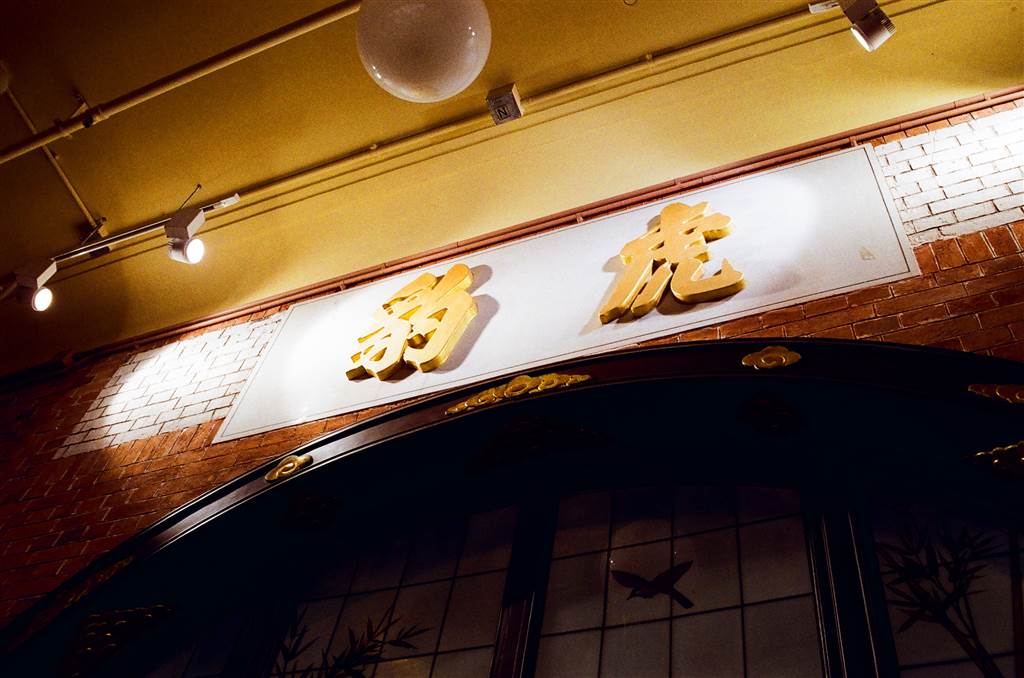
Update: As of December 1, 2022, Haw Par Music will cease operation. Haw Par Mansion will be returned to the Hong Kong government on this day. Haw Par Mansion will remain open for public visits, and activities already planned will continue to be held. For details, please see government press release here.
Hong Kong’s First Theme Park
For older generations of Hong Kongers, the Haw Par Mansion was a treasured childhood memory. Its Tiger Palm Garden, accessible for free by the public throughout its 60-year existence, was the first theme park in Hong Kong. It came before the much more benign Lai Yuen and Ocean Park came into existence. Lai Yuen and Ocean Park were more “benign” because the Tiger Balm Garden featured imageries of hell.
The owner had intended it to serve an educational purpose to the visitors. Live a virtuous and benevolent life, lest you end up in hell. The Tiger Balm Garden was demolished in 2004 to make way for high rises in the area.
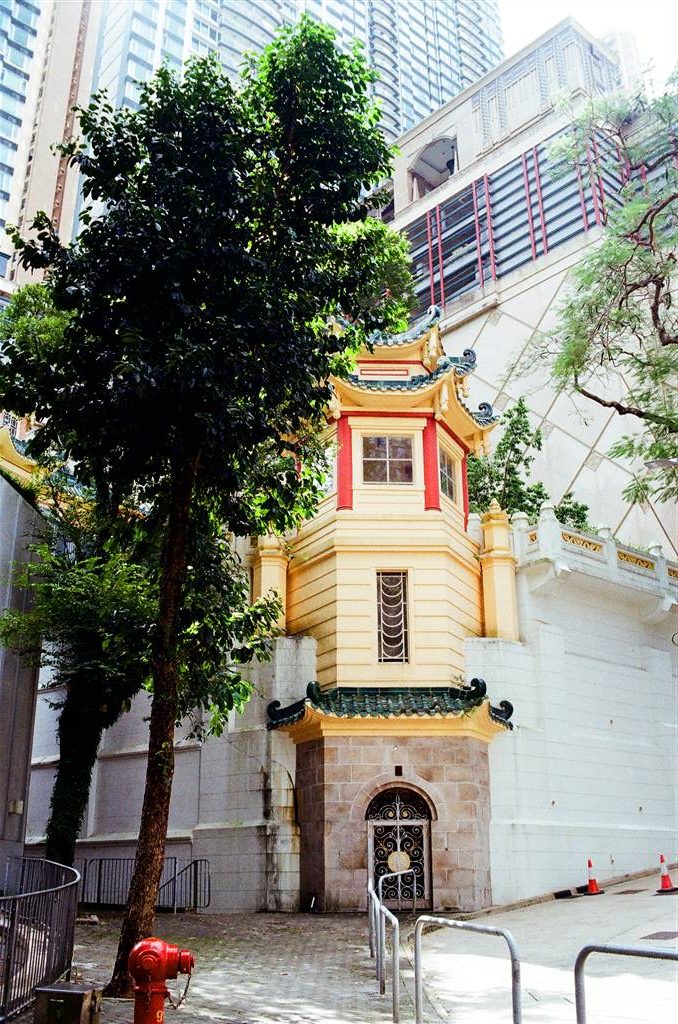
The Corner Tower on Tai Hang Road. The residential development behind it was where the Tiger Balm Garden used to be
Haw Par Mansion – Opening Its Doors
Entrepreneur Aw Boon Haw built the Haw Par Mansion for his second wife Tan Kyi Kyi. While neither of them was from Hong Kong, they loved it here. In 1932, Aw Boon Haw established Tiger Balm’s second largest production facility in Hong Kong. The Haw Par Mansion was their home in Hong Kong.
The mansion, along with the public park, began construction in 1933 and completed in 1936. The park was open to the public for a good sixty years. But the Mansion remained the private residence for the Aw family until the 1990s.
The word Haw means “tiger” and Par means “leopard.” They came from the names of Aw Boon Haw and Aw Boon Par, who were brothers. Together they inherited their father’s small herbal shop in Rangoon, and founded the Tiger Balm enterprise in Southeast Asia. Although the younger brother’s name appears on the mansion, ownership of Hong Kong’s Haw Par Mansion belonged only to the older brother, Aw Boon Haw. “Boon” means gentle.
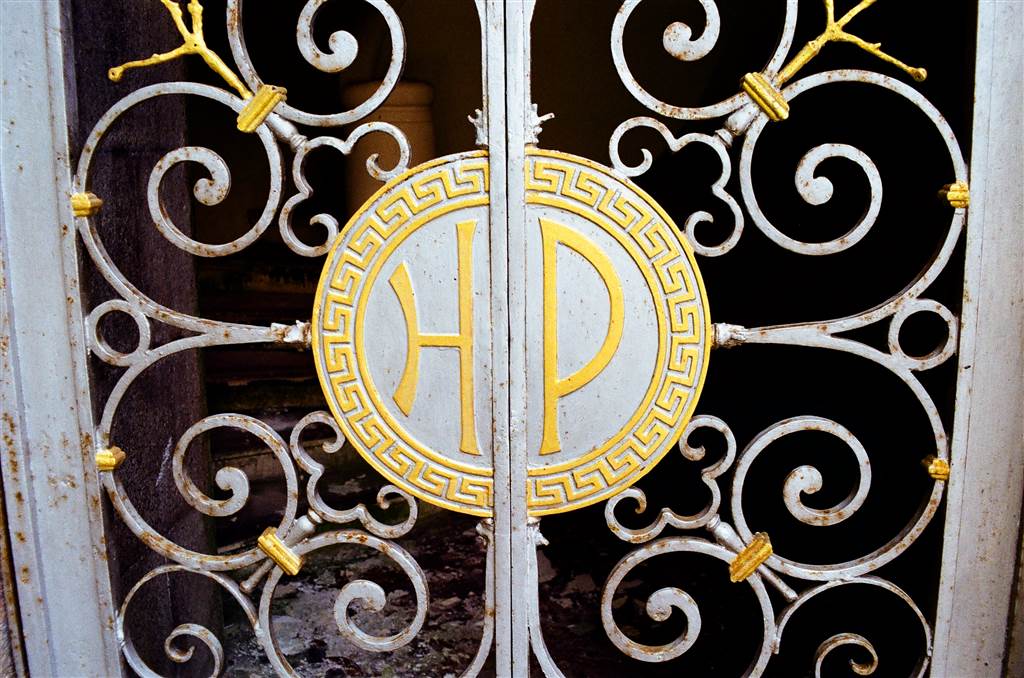
During the 1990s, the owner sold the whole property, including both the public garden and the private mansion, to Cheung Kong Holdings. The Hong Kong Government then stepped in to negotiate with Cheung Kong Holdings to preserve the Haw Par Mansion. The mansion came under government management and ownership in 2001. Its history and architectural features were the outstanding merits that resulted in a Grade 1 Historic Building protection in 2009 under the Antiques and Monuments Ordinance.
For a somewhat convoluted history of the Haw Par Mansion’s sale to Cheung Kong and the subsequent government takeover of the property, Wikipedia has an entry here. I shall not delve into this history.
In 2019, the Haw Par Mansion opened its doors to the public for the first time. It now serves as both a museum and the venue for music training and events for Haw Par Music (see below). Free public tours of the site are available, with a choice in Cantonese or English, but advanced booking is required. I highly recommend this tour, as the tour guides are well-versed in all aspects of the Haw Par Mansion. It also allows access to rooms in the mansion that are not open to public.

The Main Hall at the Haw Par Mansion now serves as the museum displaying exhibitions
The Tour at Haw Par Mansion
Despite the demolition of the public garden, the Haw Par Mansion and its private courtyards were preserved. I joined a guided English tour. On that day, both the Cantonese and the English groups were fully booked. Then we had a 1.5-hour conversation about the history, appreciation and features of the Haw Par family, the Haw Par Mansion and the Tiger Balm Garden.
On the ground floor entrance, a few signature items are on display. These were all original items at the Tiger Balm Garden.
Throughout the tour, we saw a number of other items that the government managed to salvage from the Tiger Balm Garden demolition. The tour guide told us that Cheung Kong gave the government just three weeks to take anything it could before the demolition. I vaguely remember that there were 200 such pieces, many of which were statues and figurines. Some of them are still in storage. The restoration of the Haw Par Mansion continues to this day. It is sad, however, that the demolition did not spare the beautiful Tiger Pagoda.
Original figurines at the Tiger Balm Garden: The Weaver and the Cowboy from Chinese folklore
We took the elevator up a few floors to reach the courtyard area of the Haw Par Mansion. Right at the entrance lies a re-created marble mural featuring the Ten Courts of Hell. This was a tribute to the theme of hell at the Tiger Balm Garden. The recreated imageries were modeled after the originals in the Tiger Balm Garden.
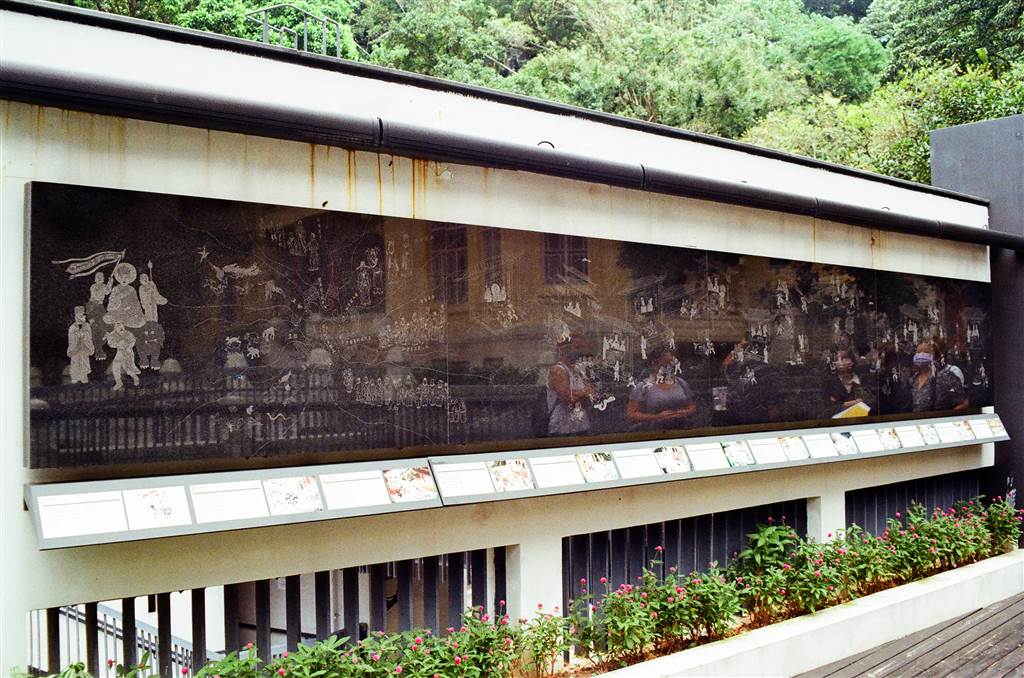
We then proceeded to the beautiful front yard, the design of which comports with the general style of the Chinese eclectic in the mansion.
See below for more.
Architectural and Design Features of the Haw Par Mansion
The building, in its exterior and interior, shows the distinct influence of the Chinese eclectic style. This means that the design has fused prominent elements of eastern and western traditions—and not only Chinese and western, but Chinese, Burmese, Indian, Italian and other western themes that Aw Boon Haw himself had appreciated in his life. Our tour guide pointed us to many special features of the building to illustrate the Chinese eclectic style.
Views of Haw Par Mansion at the formerly private garden
In the formerly private courtyard of the mansion, we saw a beautiful fountain. This was the first illustration of the Chinese eclectic style on the tour. The Romanesque fountain would keep the water flowing on the main axis of the mansion. The Chinese element was the statue on top, showing a boy holding a koi. In Cantonese culture, both water and koi are symbols for wealth.
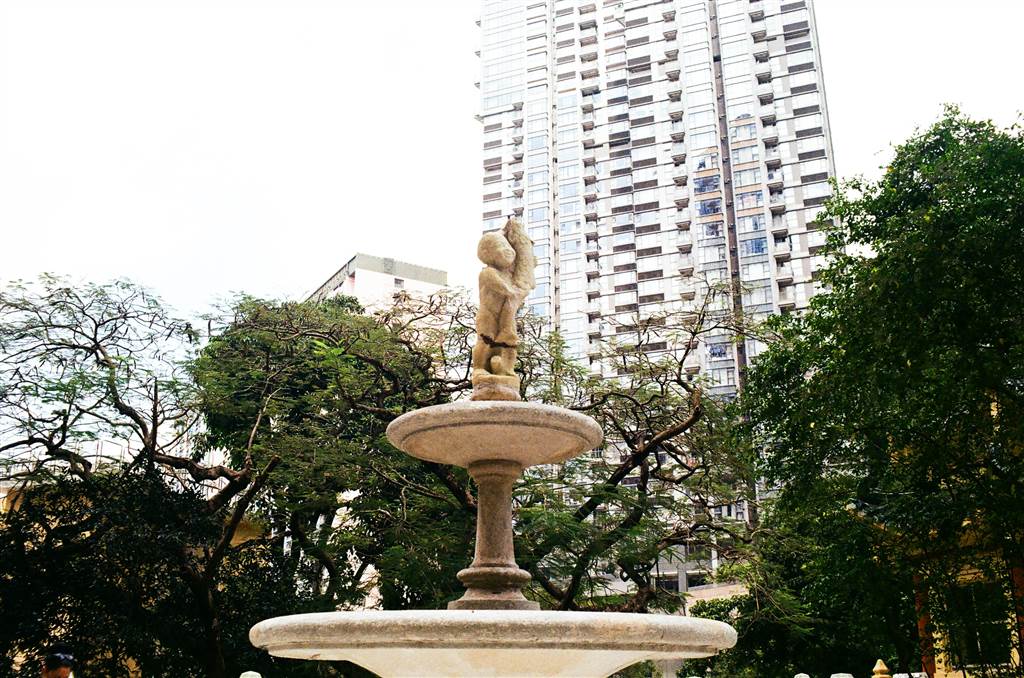
Of the beautiful mansion, I liked the Moon Gate the most. The Moon Gate is the circular main gate in the front and back of the mansion. Although the front moon gate faces the garden, the back moon gate was actually where the Aw’s entered their home. Both feature beautiful stained glass.
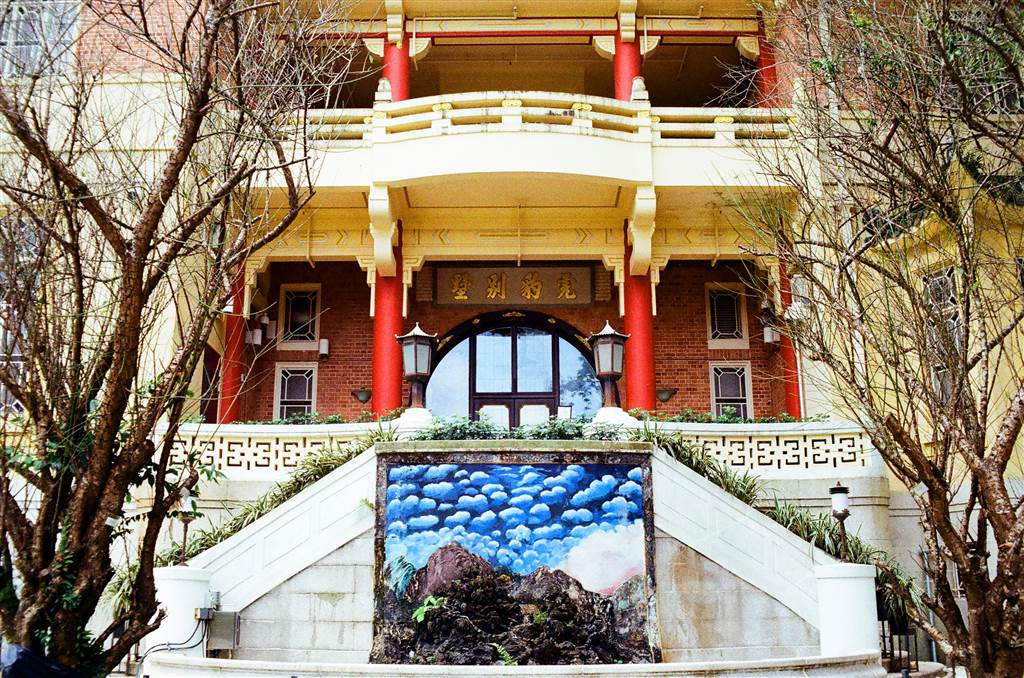
Again, there is that mixture of eastern and western influences here. In Chinese culture, the full moon represents unity. But note that the original creator of these bird patterns was Italian. The stained glass shows western imageries. The panes came from the stained glass decoration specialist Tolleri in Florence, Italy, and it is no longer feasible to find the same firm to replace them now. The best that the government can do in terms of preservation is to find artists to mend the paint the best they can.
The moon gates as viewed from the interior of the Haw Par Mansion. The tigers on the left are original patterns. The right photo shows the patterns on the back moon gate.
The only other moon gate in Hong Kong is in the Cheung Chau Hospital. That is because the hospital was founded with the donation of the Aw brothers.
Much of the furniture on show in the Haw Par Mansion now were the original pieces, and they were donations from the Aw family.
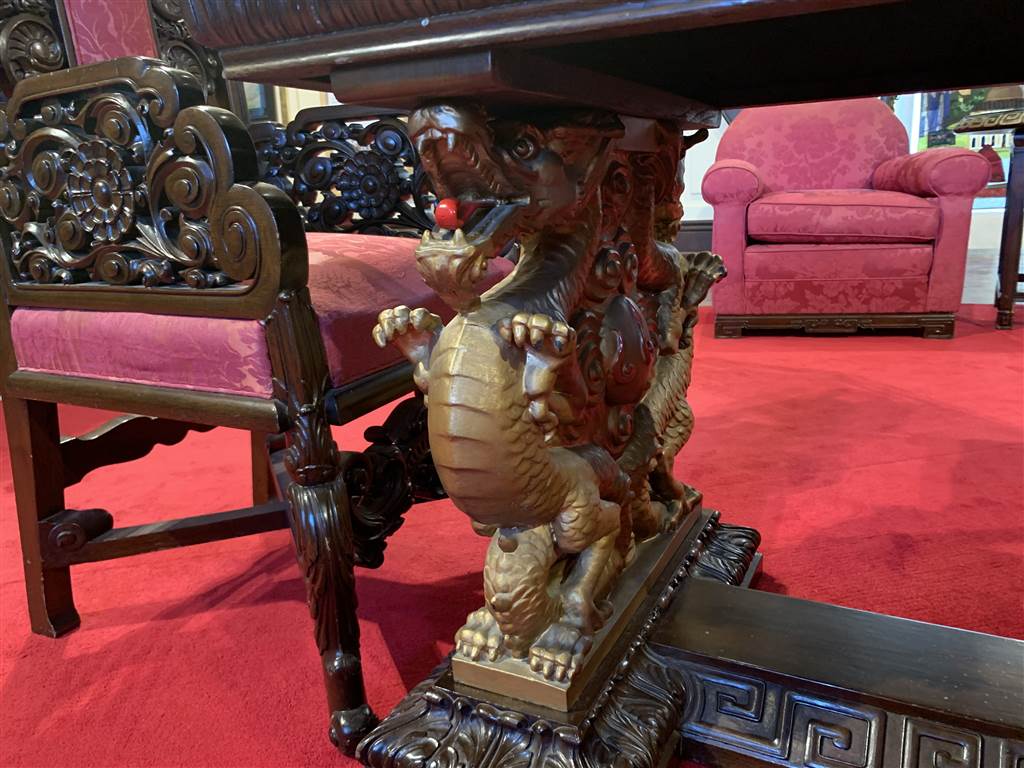
The interiors of the main hall and the dining hall were surely a show of wealth for the Aw family. For there was no lack of gold in the décor, serving as the auspicious token to bring in more wealth. The ceiling is gilded in real gold.
The glistening gold of the Dining Hall
This bathroom color-themed in green and pink shows the most luxurious in those times. All pieces in the master bathroom are original. The bidet is rarely seen in Hong Kong. The aged green color gave a surreal impression. All the features belong to a generation bygone, yet they remain an evergreen classic in our times. The master bathroom is a glimpse of Mr. Aw Boon Haw’s taste, for everything here had to meet his requirements.
Sally Aw Sian, the Daughter of Aw Boon Haw in Hong Kong
Both the first and second wives of Aw Boon Haw did not bear any biological child. Therefore the first two wives have both adopted children. The adopted daughter Sally Aw Sian in Hong Kong eventually became the owner of seven newspapers, including the best-known Sing Tao Newspaper and the Standard. She has told many interesting stories about her mother’s lifestyle in the Mansion.
For example, there is a family vault inside the master bedroom of the mansion. Its original use was to keep the family’s valuables. However, in the 1940s or so, banks have risen to become the main keeper of family heirloom. So then what did her mother keep in this family vault? Sally Aw said common items, like toilet paper. It was a very humorous point on this tour, as toilet paper was much sought-after during the early times of the pandemic. Mrs. Aw certainly had the foresight of its value.
Photos: the family vault in the master bedroom is fire-proof.
Haw Par Music
The Haw Par Mansion was revitalized under the auspices of the Hong Kong Government’s Revitalising Historic Buildings Through Partnership Scheme, the Aw Boon Haw Foundation and the Haw Par Music Foundation Limited. It is the first music school in Asia specializing in chamber music.
Besides musical training, Haw Par Music also provides music therapy. There are social initiatives, including the provision of scholarship to those in need to pursue musical training. The Haw Par Mansion serves as the venue for free concerts.
These two pieces show the Burmese influence in the Chinese eclectic style at Haw Par Mansion
Some Concluding Thoughts
I visited the Stone House Family Garden a week after my tour at the Haw Par Mansion. The Stone House Family Garden was a tenement for the refugee settlers in Hong Kong after WWII. The Haw Par Mansion, on the other hand, was home to one of Southeast Asia’s richest families. It goes without saying that there is a stark contrast between the two. I would say that the same area in the Stone House that gave home to thirty people at one time, would make only the bathroom in the master bedroom at Haw Par Mansion. This is the portrait of Hong Kong. Space is a direct measure of one’s wealth. While it does remain true today, it was true to a much larger extent back then.
That is not to say that the Aw family has made no commitment to the welfare of Hong Kong. Quite the contrary. Besides this beautiful building and the public park that existed before demolishment, the Aw Boon Haw family has made quite a number of charitable donations in Hong Kong. As mentioned above, the Cheung Chau Hospital was the result of an Aw Boon Haw donation. There are also schools named after Mrs. Aw Boon Haw in Hong Kong. And finally, there is Haw Par Music now.
How to Get There
The address of Haw Par Music is 15A Tai Hang Road.
The green top minibus Route 21M runs from Lan Fong Road (Lee Theatre 1) in Causeway Bay. Get off at the Serenade stop, where you will see the sign 15A and Haw Par’s trademark tiger just a few steps ahead. Otherwise, buses 11, 41A and 63 also stops at the Serenade stop.
Sources
The Free Public Tour of Haw Par Music
Descriptions on-site.
The website of Haw Par Music
The Wikipedia on Tiger Balm Garden (Hong Kong).

